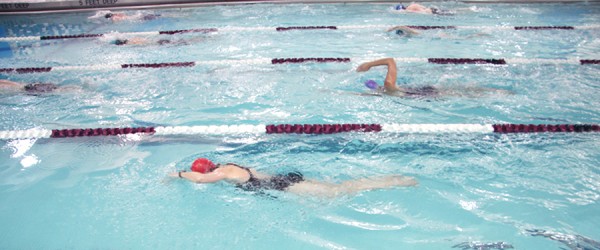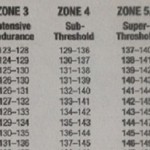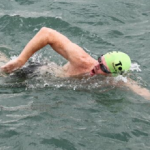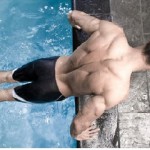SWIM PACING – Part 1, Holding Pace
The ability to pace eludes many people. There are several straightforward ways to look at the skill:
– Holding the same pace over a series of swims
– Increasing pace consistently over a series of swims
– Varying pace at will
The key to holding pace over a distance is to know how you should FEEL (perceived exertion) as the distance progresses. You would not warm up for a run by sprinting or running hard – this is a good way to get injured, or simply ruin your later sets. So it goes in the pool.
Many SLOWER SWIMMERS find themselves trying to keep up with others (or not slow them down) and start quickly and fade, never thinking about how they feel at all. They will have to get better at managing the act of letting faster swimmers through as they go at their own pace, especially at the start.
COACHES should remember that poor pacers typically don’t know how to time themselves. They may even avoid or dislike doing it. You’ll have to do this for them initially so they can learn by feel.
An example from this morning:
6x100yd, 20sec rest, build effort by 25 from very easy to moderately hard
By design, you’re supposed to get faster with each 25, but this didn’t happen and it turned into a pacing lesson. This is an easy set for experienced swimmers but deceptively difficult for current non-pacers to manage. First, you must realize that you have to MANAGE EFFORT THROUGH THE SET. Second, manage effort through EACH 100. Here’s what happened to one swimmer, who was really great to work with:
1st 100: 25yd in 29.5, 25yd in 28.5, 25yd in 30.5, 25yd in 31.0
2nd 100: 25yd in 29.5, 25yd in 29.5, 25yd in 30.5, 25yd in 31.5
3rd 100: 25yd in 30.5, 25yd in 30.5, 25yd in 31.0, 25yd in 31.5
4th 100: 25yd in 31.0, 25yd in 31.5, 25yd in 30.5, 25yd in 29.5
I was working with her each time to measure and moderate her effort in an attempt to find optimal pacing, telling her the 25yd splits at the end of each 100. SWIMMERS NEED DATA to know how they’re doing. What happened:
1) Each successive 100 started slower (vertical bold numbers). She was coached to do this: I knew her times got slower in the 1st 100 because she went out too hard not only for that 100 but for the ENTIRE set.
2) By the last 100 she was at a pace she could hold and even slightly improve. The NEXT TIME she does a similar set, she would aim to do her 25s in 32-33sec to start, a 2:10-2:15 per 100 pace. She’ll have to learn to use her watch or the pace clock. (There were long breaks at times between these swims so even 31sec would be difficult for her to hold with minimal/consistent rest.)
3) It took four tries before she went EASY enough on the first 25. This is typical.
4) To her, 31sec felt like crawling compared to 28 or 29sec, but the effort was MUCH more manageable.
Most people must go MUCH easier to start a long set than they imagine. It can be difficult mentally to go slow when you know “you’re much faster than this”. However, the quality of your sets will improve, and the quality of your races (if you swim meets, open water, triathlon, etc…) will improve.









